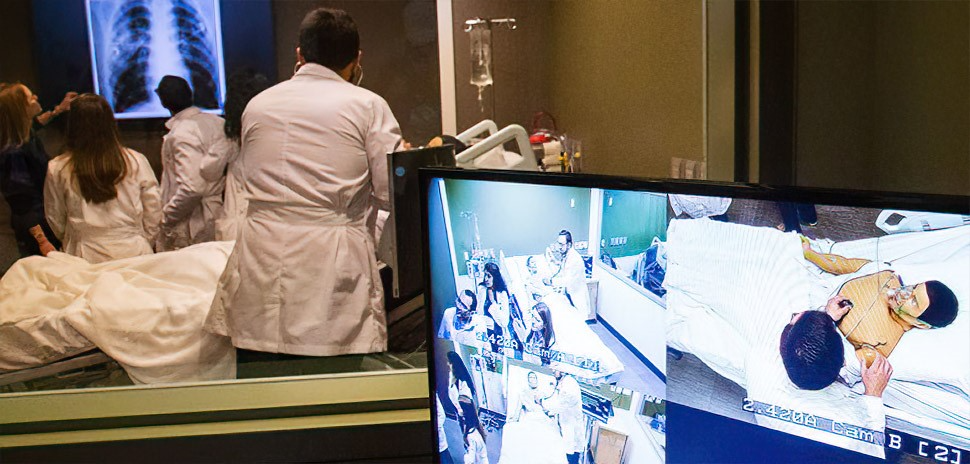The Human Genome Project identified and mapped all of the genes of the human genome, achieving the world’s largest international, collaborative biological project. That opened the door to a wide array of innovative research projects—including a prestigious one that UT Southwestern has just joined.
A team of UT Southwestern faculty led by Gary Hon, Ph.D., has been awarded a five-year, $8.8 million grant to participate in the National Human Genome Research Institute’s Impact of Genomic Variation on Function (IGVF) Consortium. The consortium’s goal is understanding how developmental variants contribute to developmental diseases.
Dr. Hon developed genome engineering technique
Dr. Hon is an assistant professor of obstetrics and gynecology in the Cecil H. and Ida Green Center for Reproductive Biology Sciences and a member of the Lyda Hill Department of Bioinformatics.
Hon developed Mosaic-seq, a genome engineering technique that helped lead to the awarding of the $8.8 million grant. In a statement, he said the IGVF Consortium is the National Human Genome Research Institute’s next step to “unveiling the genome’s role in disease.”
“The Human Genome Project told us that most of the genome doesn’t contain genes,” Hon said. “One big surprise from genome-wide association studies is that gene-poor regions contain many disease signatures.”
“It turns out that the signatures largely overlap with DNA elements, found by the Encyclopedia of DNA Elements (ENCODE) Consortium, that control when genes turn on,” Hon added. “The goal of this consortium is to fill in the gaps, linking DNA sequences to genes, cell phenotypes, and disease. Ultimately, this knowledge will allow us to interpret the disease potential of any person’s genome sequence.”
From molecular biology to genomics to high-throughput screens
In their work with the consortium, the UTSW team will combine molecular biology, genomics, high throughput screens, and computational analyses to focus on potential disease-causing genetic variations in the cardiovascular, nervous, and placental systems.
Besides Hon, the team also includes principal investigators Nikhil Munshi, M.D., Ph.D., associate professor of internal medicine and molecular biology, and W. Lee Kraus, Ph.D., professor and director of the Green Center.
Mosaic-seq allows high-throughput analysis of molecular events
Mosaic-seq allows high throughput analysis of the molecular events that occur during programming of embryonic stem cells into other cell types. This technique uses single-cell sequencing to study different regions of the genome at the same time.
Just one experiment can “perturb” thousands of regions in the genome to better understand their function, according to the UTSW team.
With Mosaic-seq, researchers no critical have to study one region at a time. Hon’s lab received national attention in 2017 for this significant advance, which was part of his team’s grant application.
UTSW joins Harvard, Stanford, and Yale among 30 research sites in the consortium
UTSW now joins Harvard, Stanford, and Yale universities as one of the 30 research sites taking part in the IGVF Consortium nationwide. The consortium will study noncoding regions of the human genome that are known to contribute to genetic diseases—including congenital heart disease, autoimmune disease, and blood disorders.
Dr. Kraus will use additional CRISPR-based tech
Dr. Kraus, a professor of obstetrics and gynecology and pharmacology who holds the Cecil H. and Ida Green Distinguished Chair in reproductive biology sciences, will use additional CRISPR-based technologies in the consortium research project. Kraus will use them to study how genetic variation in non-coding RNAs originating from the regulatory elements impacts the development of the placenta.
The placenta’s development is important because it supports the human fetus as it grows, as well as the fetus’s heart and central nervous system.
“Studying the role of genetic variation in the embryonic development of these key organs could point the way to understanding human diseases in adults,” Kraus said in the statement.
Dr. Munshi: the consortium “could fill. in huge pieces of the puzzle”
Dr. Munshi believes the IGVF Consortium initiative could potentially fill in huge pieces of the puzzle for many diseases.
“If we can determine all of the noncoding elements in the genome that impact a particular developmental pathway, then those could become candidates for disease-associated mutations,” Munshi said.
“By generating catalogs of tens of thousands of functional variants, we don’t have to search the billons of base pairs to find where the disease-causing mutations might lie,” he added. “We can really focus the search on these tens of thousands of variants. It really gives us an encyclopedia to narrow the search.”
![]()
Get on the list.
Dallas Innovates, every day.
Sign up to keep your eye on what’s new and next in Dallas-Fort Worth, every day.


































































